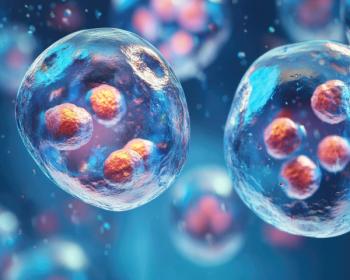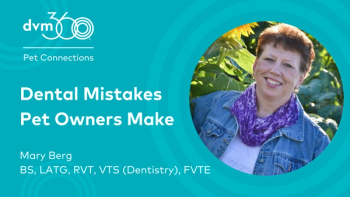
Simple extractions (Proceedings)
Simple extractions in some cases are not always simple as their name implies.
Extractions of teeth in dogs and cats are commonly categorized as simple or surgical, Surgical extractions involve periodontal flaps and the removal of bone to expose tooth roots. Simple extractions in some cases are not always simple as their name implies. Fractures during extraction may require surgical methods to complete the procedure.
Simple extractions involve the removal of single rooted teeth or the removal of teeth with multiple roots that have been sectioned. It is considerably easier to extract a two or three rooted tooth that has been sectioned to form two or three single roots respectively.
The presence and degree of periodontal disease partially determines if a tooth can be extracted using a non-surgical technique. The extraction site of a tooth that has undergone periodontal destruction of bone and soft tissue that is not readily debrided without additional exposure and leaves jagged diseased bone is likely best treated surgically. At the other end of the spectrum a canine tooth that is fractured that is not a candidate for root canal therapy may have no periodontal involvement. Extracting these teeth without surgical exposure may be extremely difficult. Removing some marginal bone and the creation of mesial and distal "moats" around the canine can greatly facilitate extraction and minimize anesthesia time and tissue trauma.
Simple extraction technique involves the following:
1. Disinfection of the oral cavity with 0.0125% chlorhexidine rinse
2. Breakdown of the epithelial attachment with a scalpel or luxator
3. Severance of the periodontal ligament with a luxator or periotome.
4. Establishment of purchase with a luxator or elevator between the bone and the tooth.
5. Slow and sustained pressure with a luxator or elevator to fatigue the periodontal ligament. Ten to fifteen seconds is generally recommended.
6. Use extraction forceps to provide slight twisting pressure combined with coronal traction to complete the extraction.
The key to successful simple extractions is slow sustained pressure. The periodontal ligament is very resistant to quick movements, however can not withstand steady pressure over time. A big mistake is attempting to "dig out" teeth using quick jerky movements. This is a very ineffective and ergonomically unsound practice that results in frustration and adds considerably to procedural time.
Following successful extraction the alveolus is rinsed with sterile saline, any diseased tissue or debris is curetted out of the alveolus using a periosteal elevator, bone curette or similar instrument and a blood clot is left to the level of marginal bone. Digital pressure lightly applied to the clot ensures adaptation to the alveolus.
The practitioner must keep in mind that iatrogenic root fractures during simple extractions may deem a simple extraction a surgical one. The use of an endodontic file may aid in extraction of root tips and will be discussed. Case presentations and proper technique will be demonstrated in the live presentation.
Newsletter
From exam room tips to practice management insights, get trusted veterinary news delivered straight to your inbox—subscribe to dvm360.






